‘Tultul’: Traditional salt-making lives on in Guimaras
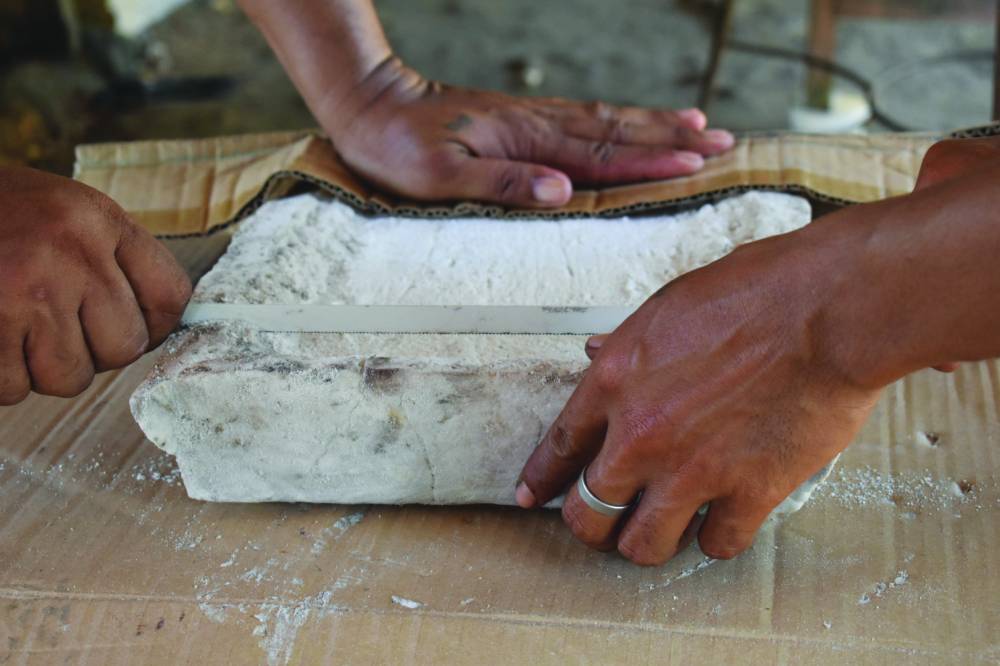
JORDAN, GUIMARAS—In the coastal village of Hoskyn in the heart of this town in Guimaras, a family has been trying to keep a century-old practice of producing artisanal salt alive.
Shirley “Nenen” Padojenog, 65, is one of the few people who have mastered the art of making tultul, a block of artisanal salt, also locally known as “dukduk,” made from the ashes of driftwood that have been soaked and boiled in seawater and coconut milk.
The legacy of tultul-making dates back to the late 1890s when Padojenog’s grandfather, Semion Ganila, concocted it to provide for his poor family.
In those days, Guimaras only had a handful of houses, thus opportunities for livelihood were scarce.
Padojenog could not recall how her grandfather came up with the recipe except that he used what was abundant in the area — coconut and seawater.
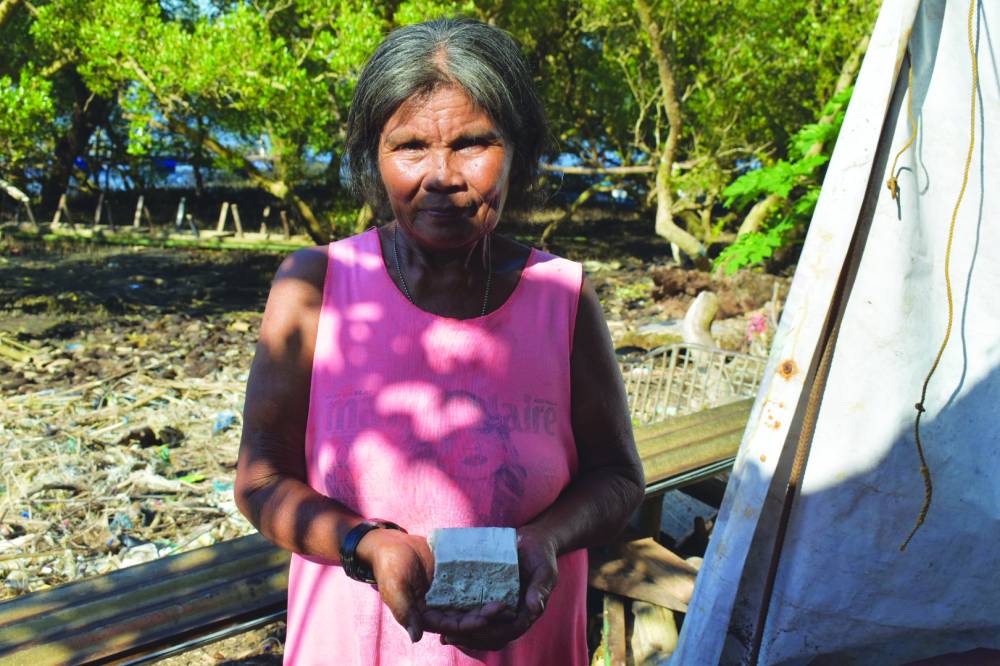
She said the final recipe for tultul was a product of trial and error before her grandfather was satisfied with its taste, especially when paired with rice.
Tultul was used to exchange for essentials like bananas, fruits, and other crops. This age-old trade, rooted in the quest for survival, laid down the foundation for a tradition that would span generations.
Padojenog was only 10 when she learned how to make tultul through her father after Ganila passed it down to his children. When her father died at the age of 55, Padojenog carried on the tradition along with her uncle, Sarafin Ganila, and cousin, Jomar Ganila.
Jomar, however, had stopped making tultul a few years back due to his asthma. His children did not take the craft as they were busy with other jobs.
Lull
Padojenog’s family, however, was forced to stop making tultul in 2014 when eldest son, Cherald, decided to focus on their travel and tour business following the influx of tourists to Guimaras.
But tourism took a nose dive in 2020 when travel restrictions were imposed to stop the spread of COVID-19. Guimaras also suffered from an oil spill in 2020 from a damaged power barge that was anchored off Iloilo.
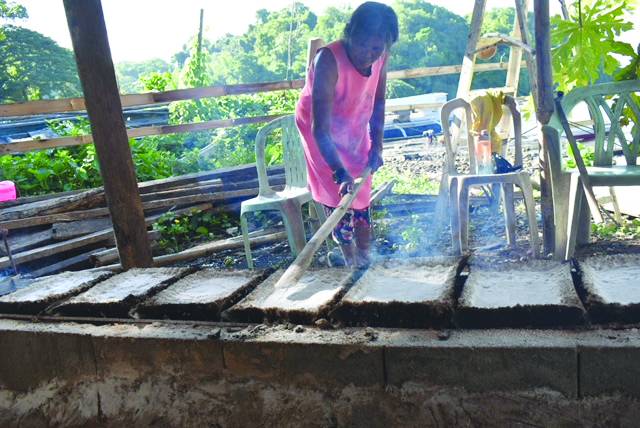
It was a harsh time for Padojenog who had to resort to scavenging to support her 10 children.
Padojenog, who is separated from her husband, decided to revive their tultul business, hoping that it would help her family as it had done so with her grandfather in the past. She also needed additional income especially that her youngest child would be entering college at Guimaras State University.
The year 2021 marked a return of the Padojenog family to tultul production.
But it was not easy.
Some neighbors, unfamiliar with the family’s link with the artisanal salt, raised concerns about the constant smoke generated during the almost 16-hour salt-making process.
Because of the complaints, the Padojenogs made the tough decision to relocate, ensuring they could pursue the backyard business without interruptions.
From nature to table
The Padojenogs have become used to an early morning routine, where family members
are already up by 2 a.m.
The process begins with a selective gathering of “dagsa” or driftwood that has been soaked in saltwater.
While driftwood is abundant in Jordan, the Padojenogs get only what they need to ensure that this important raw material will not be depleted.
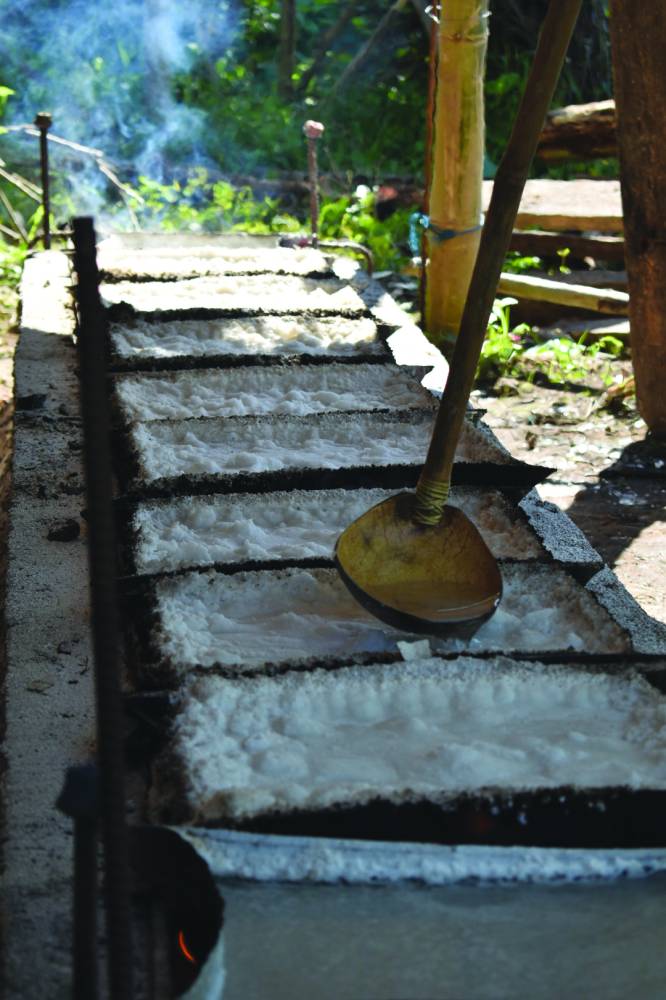
Driftwood and cooking pans are replaced frequently to ensure the salt maintains its distinct off-white color, a hallmark of their traditional method.
Collected driftwood pieces are burned and its ashes gathered and placed inside bamboo baskets known as “kaing.” Seawater is poured over the ash before the mixture is strained.
The strained water is then collected in containers beneath the baskets. The process is repeated multiple times to create a hyper-concentrated solution.
Some of the strained water are mixed with coconut milk (“gata”) to add flavor. The mixture is then poured into a cooking pan where it is slowly cooked for several hours.
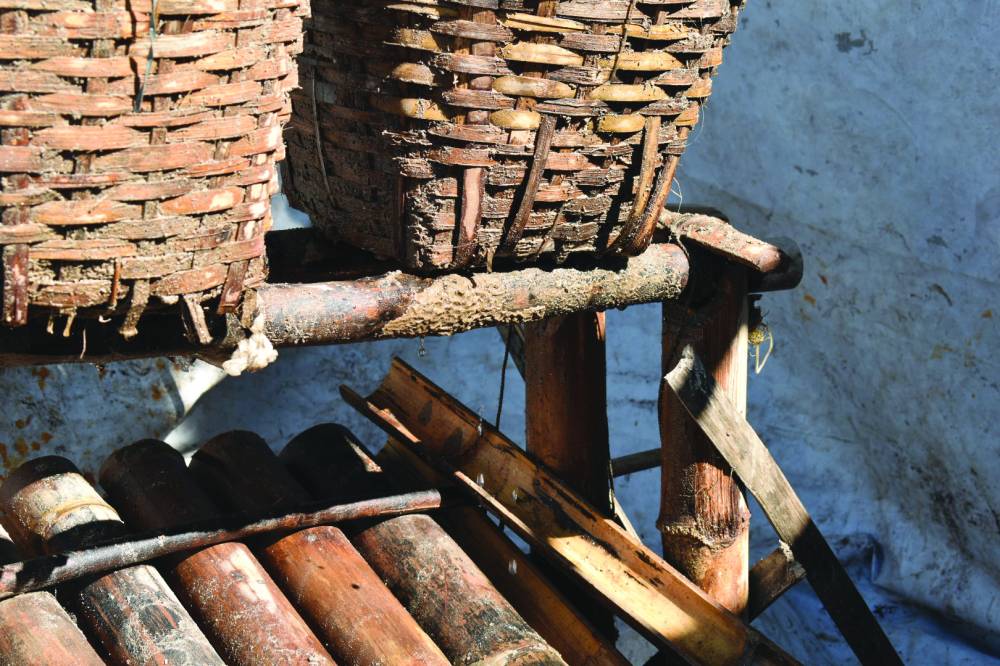
As the mixture evaporates due to intense heat, a small amount of the remaining strained water from the kaing is added. The process, although slow, gradually forms salt lumps, or tultul.
The family shells out P15,000 in capital for a batch of Tultul but gets P30,000 in net profit.
A tray of tultul is cut into 16 pieces — about the size of a bar of soap — which the family sells for P150 each. The family usually makes tultul once or twice a week, depending on the demand.
Word-of-mouth
The Padojenog family doesn’t want to limit their product to the local market.
Cherald travel and tours business has paved the way for international interest in their products.
His foreign customers began purchasing his products in large quantities after initially buying a handful of tultul.
Impressed by the quality and taste of tultul, they later asked for more.
The Padojenogs rely on the positive word-of- mouth generated by their satisfied customers, allowing their business to reach new markets and audiences around the globe.

Cherald is already seeking advice from the Department of Trade and Industry for a standard packaging, aiming to bring the family product to a wider client base.
There is uncertainty as Padojenog still does not know if any of her 18 grandchildren is willing to continue the family legacy.
But Padojenog and her children are hopeful that younger family members will develop a deep and unwavering passion for salt-making.
“My grandchildren love making tultul with me; they can’t wait to start [helping around] after school. We have to be careful, though, because it gets really hot [in the production area], and we don’t want them to get scalded,” Padojenog said.
But with her dedication, Padojenog is confident that she has done enough to pass down the craft that has symbolized their family’s roots and resilience.





















